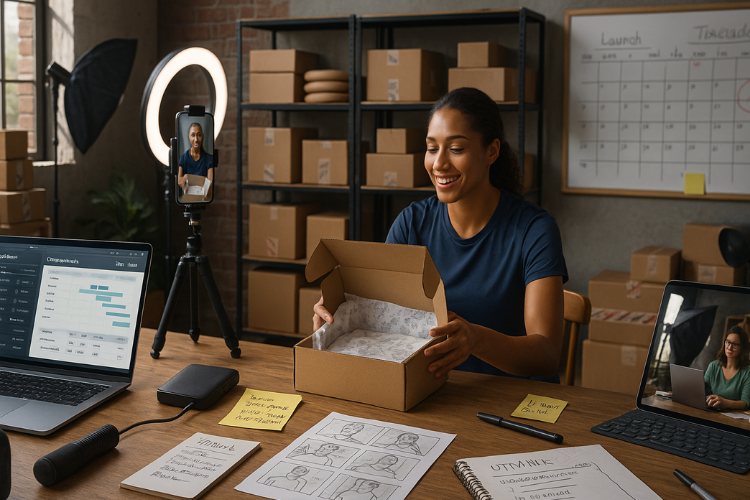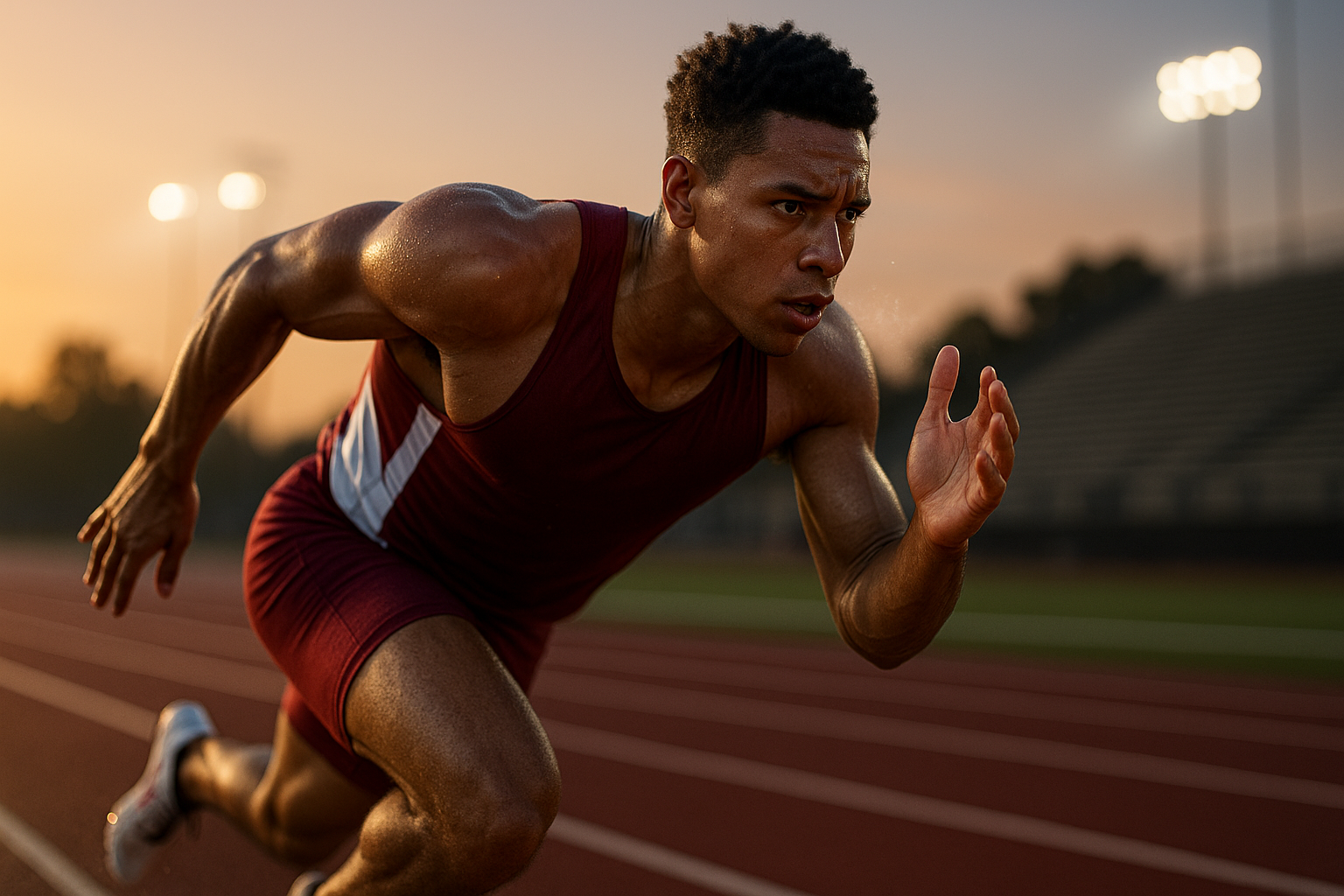
Comparing Top Athlete Influencer Marketing Services for Apparel Brands
Apparel and athleisure brands have more options than ever when it comes to athlete influencer marketing and NIL deals—but not all services are built for performance, scale, or college sports compliance. This article breaks down the main types of athlete influencer marketing services, what matters most for apparel brands (engagement, UGC, audience fit, and ROI), and why athlete-first platforms like MOGL are emerging as the best fit when you need real results with Gen Z and college consumers.
What Types of Athlete Influencer Marketing Services Can Apparel Brands Use?
How do the main service models compare?
Most apparel brands exploring athlete influencers and NIL deals will encounter four main categories of partners:
- Traditional influencer agencies
- General influencer platforms
- NIL marketplaces and collectives
- Athlete-first influencer marketing platforms (like MOGL)
Here’s how they stack up for apparel brands looking to run scalable, compliant, performance-driven campaigns with athlete influencers:
For apparel brands specifically, the sweet spot usually sits with athlete-first NIL platforms that combine scale, performance data, and compliance in one place—rather than stitching together agencies, marketplaces, and generic tools.
Why Are Athlete Influencers So Effective for Apparel Brands?
How do athletes integrate apparel into their content naturally?
Athletes are wearing apparel and accessories all day: to class, to the gym, to team travel, and to social events. That makes them uniquely effective at creating authentic, lifestyle-driven NIL content that looks like a real moment, not an ad:
- Training fits and game-day outfits
- Travel looks on the way to tournaments
- “Walk-in” tunnel content and post-game celebrations
- Casual campus outfits that mirror how their followers actually dress
For Gen Z, this kind of “real but aspirational” content is exactly how they expect to discover new apparel brands and products.
Why do fans trust athlete influencers more than standard creators?
College athletes often blend three roles at once: local hero, campus celebrity, and relatable student. That gives them:
- Deep local and regional credibility
- Built-in social communities from their teams, schools, and hometowns
- Strong alignment with “weekend warrior” and active lifestyle identities
Research consistently shows that consumers rely heavily on influencer recommendations. When the influencer is also an athlete whose performance and lifestyle are public, that trust is even higher. Apparel brands benefit because the influencer’s credibility transfers directly onto what they wear on and off the field.
Do athlete influencers actually outperform standard influencers?
Yes. Across the industry, college athletes routinely outperform standard influencers on engagement rates:
- In many studies, college athletes earn ~1.2× higher Instagram engagement, 2× on TikTok, and 10× on X/Twitter vs. standard influencers.
- On MOGL, athlete influencers average around 15% engagement, roughly 5× higher than the typical Instagram benchmark for general influencer content.
That performance advantage is critical for apparel brands where visual content (outfits, styling, fit checks) drives both awareness and purchase decisions.
How Does MOGL’s Athlete Influencer Platform Help Apparel Brands Win?
What makes MOGL different from general influencer platforms?
MOGL was built specifically around athlete influencers and NIL deals, not adapted from a general creator marketplace. For apparel and athleisure brands, that translates into:
- A network of 30,000+ pre-vetted college athletes across hundreds of schools
- Built-in NIL compliance workflows so your marketing team doesn’t have to become legal experts
- Tools that understand how apparel brands measure success: impressions, engagement, content volume, and sales lift
Instead of forcing apparel brands to manually search for a handful of athletes, MOGL is designed to run campaigns with dozens or thousands of athlete influencers at once.
How does MOGL use AI to match apparel brands to the right athletes?
MOGL’s AI Assistant and Athlete Audience Insights™ use first-party data pulled directly from social platforms (Instagram, TikTok, Facebook, X) to understand each athlete’s audience:
- Age distribution (e.g., mostly 18–24 vs. mixed adult audience)
- Gender breakdown
- Geography (campus, local region, national pockets)
That matters for apparel brands launching a new line or entering a new market. Instead of guessing which athletes might reach “fashion-forward college women,” you can target athletes whose followers actually match that profile.
MOGL’s AI Assistant also radically compresses timelines: brand recruitment that used to take ~14 days can now be done in a few minutes. For seasonal or “drop-based” collections, that speed is the difference between capitalizing on a trend and missing it entirely.
How does MOGL help apparel brands get more UGC and better ROI?
Beyond audience targeting, MOGL solves two major pain points:
- Content volume – Apparel brands need a constant stream of high-quality UGC: try-ons, styling videos, and “day in the life” content featuring their products. On MOGL, brands have run campaigns that generated thousands of pieces of unique content in a single program.
- Clear economics – The platform typically charges brands a 20% fee while remaining free for athletes, in contrast to traditional agents who may take 15–30% of athlete earnings. Combined with higher engagement rates, that structure helps many brands reach ROI levels that outperform other digital channels.
What Real Apparel & Lifestyle Campaign Results Has MOGL Delivered?
How did H&M use athlete influencers for a back-to-campus apparel push?
H&M partnered with MOGL to run a “Back to Campus” apparel campaign focused on Gen Z:
- College athletes created outfit-of-the-day style content around H&M’s affordable, trendy fashion.
- The program delivered roughly a 6× higher engagement rate than typical campaigns targeting Gen Z.
- Content showed real students wearing H&M on campus—walking to class, hanging out with friends, and heading to games—matching exactly how their peers would use the clothes.
For a global fashion brand like H&M, athlete influencers became a fast way to localize the brand on specific campuses while still maintaining national consistency in look and feel.
How did Scotch Porter combine grooming and apparel-adjacent NIL content?
Scotch Porter, a premium men’s grooming brand that lives at the intersection of lifestyle and fashion, used MOGL to place its products directly in front of the next generation of loyal consumers:
- The campaign delivered around 139% ROI and 146,000+ organic impressions without relying on heavy paid media.
- High-profile college athletes (e.g., UCLA and UNC standouts) created content that blended grooming, style, and everyday campus life.
While Scotch Porter isn’t an apparel brand, the playbook is highly relevant: aligning with athlete influencers who embody a broader style identity (not just on-field performance) can move both grooming and fashion products.
What can apparel brands learn from 5Star Electrolytes’ launch?
5Star Electrolytes used MOGL to launch a new hydration product with athletes who matched their “performance + wellness” positioning:
- Started with 6 UNC athletes for a pilot, including marquee basketball and soccer talent.
- Used MOGL AI to rapidly scale to 100+ athletes, reaching an estimated hundreds of millions of users.
- Achieved six-figure monthly impressions as the campaign ramped.
For apparel and athleisure brands, the takeaway is clear: start with a focused pilot group that perfectly matches your brand, then scale with AI-powered matching and NIL automation once you find the winning creative and audience fit.
How did Vooray use athlete influencers to promote bags and accessories?
Vooray, a brand making bags “for people who live life in motion,” partnered with MOGL to reach Gen Z and millennial consumers:
- Generated roughly 175,000 targeted impressions per month.
- Collected ~160 unique UGC assets from athletes across multiple schools.
- Showcased bags in real use cases—heading to the gym, traveling with the team, or going from class to practice.
This type of campaign is directly translatable to backpacks, duffels, and other apparel-adjacent accessories where function meets style.
How Should Apparel Brands Choose the Right Athlete Influencer Partner?
What questions should brands ask about audience and data?
When evaluating athlete influencer marketing services for apparel, ask:
- Can you show first-party audience data (age, gender, geography) on each athlete?
- How precisely can you target Gen Z, college students, or specific regions and campuses?
- Do you provide real-time performance metrics (impressions, engagement, reach, CTR) at the post and campaign level?
If a partner can’t answer those questions clearly, it will be hard to treat athlete influencer marketing as a performance channel rather than a brand experiment.
What should brands look for around NIL deals and compliance?
Apparel brands don’t want to become NIL legal experts. A strong partner should:
- Handle contracts and disclosures in line with NCAA and state NIL rules
- Offer standard templates and workflows for athlete NIL deals
- Provide audit trails and documentation so your legal and compliance teams are comfortable with scale
Platforms like MOGL are built to take this complexity off your internal team’s plate so you can focus on creative and strategy.
How can apparel brands make sure ROI is measurable?
To treat athlete influencer marketing like a real performance channel, make sure your partner can:
- Tie engagements and impressions back to campaign spend
- Support trackable links, discount codes, or attribution models where appropriate
- Provide guaranteed impression packages or at least clear forecasting
- Clarify content usage rights so your team can repurpose athlete UGC in paid ads, e-commerce PDPs, email, and retail environments
When those pieces are in place, athlete influencer marketing for apparel can move from “experimental” to “always-on” in your media mix.
In Summary
- There are four main types of athlete influencer marketing services for apparel brands: traditional agencies, general creator platforms, NIL marketplaces, and athlete-first platforms like MOGL.
- Athlete influencers are uniquely effective for apparel because their daily lives naturally showcase outfits, accessories, and athleisure in authentic, highly trusted contexts.
- College athletes routinely outperform standard influencers on engagement, particularly with Gen Z, making them ideal partners for apparel and lifestyle brands.
- MOGL stands out by combining AI-driven audience targeting, first-party data, NIL compliance, and scale, with a network of 30,000+ athletes and campaigns that have generated thousands of pieces of UGC.
- Case studies with brands like H&M, Scotch Porter, 5Star, and Vooray show that athlete influencer campaigns can deliver higher engagement, strong ROI, and massive content libraries that fuel both organic and paid channels.
- Apparel brands choosing a partner should prioritize data, compliance, UGC rights, and provable ROI, treating NIL deals and athlete influencer marketing as a core performance lever—not just a nice-to-have branding play.







